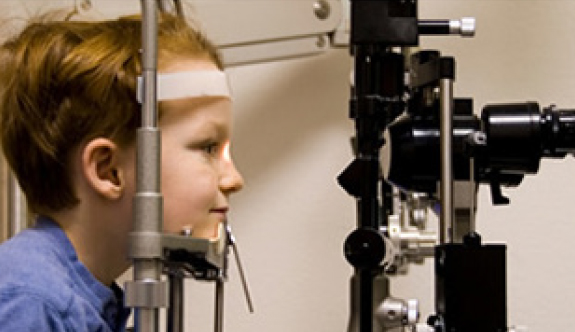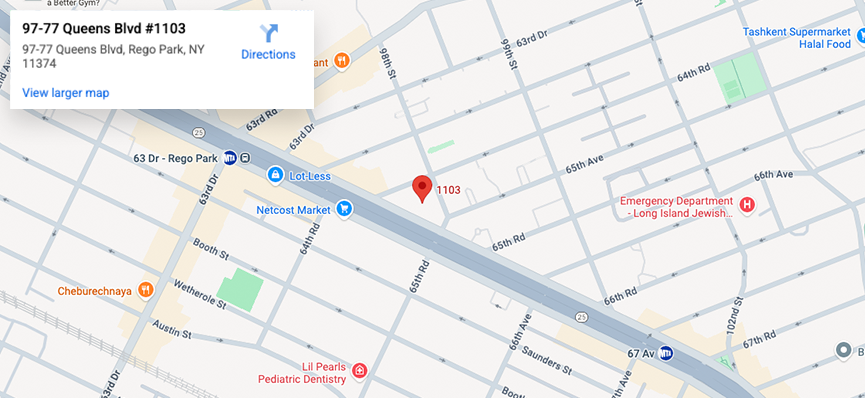
VISION SCREENING?
Vision screening is aimed at detecting eye disorders of children which are amenable to treatment in the early years of life. The recommendations begin with an exam for general eye health in the hospital nursery by a pediatrician or family doctor, followed by a repeat exam at approximately six months of age.
At age 3–5 years, children should again be screened by a pediatrician or a pediatric ophthalmologist, with an emphasis on testing visual acuity, such as by reading an eye chart of pictures or letters. In this age range, vision screening with an automated photo screening device may also be performed. Vision should be rechecked every 1-2 years after the age of five.
A pediatric ophthalmologist should be consulted if any abnormalities are discovered during these evaluations. An ophthalmologist should also be consulted if a child has any risk factors for eye disease such as a history of prematurity, or a family history of ambylopia, childhood glaucoma, cataracts or eye tumors.
When a child is young, the visual system is maturing. Treatment options which may be very effective during a child’s early years may offer little or no benefit later in life. For this reason, early awareness of eye health certainly can make a major difference.
Vision screening is aimed at detecting eye disorders of children which are amenable to treatment in the early years of life. The American Academy of Ophthalmology and the American Association of Pediatric Ophthalmology and Strabismus have issued guidelines to detect such conditions, namely amblyopia, strabismus, and refractive or focusing errors.
EYE EXAMS?
What can you expect when you take your child to the ophthalmologist? An assessment of vision is the first step. Each eye will be checked separately. This is important because a child can function normally even if one eye is blind, provided that the other eye sees well. Before the child is able to cooperate with reading an eye chart, the fixation behavior of each eye on various toys or objects can be evaluated. The doctor will also check that the eyes are aligned ( that is, there is no strabismus). Strabismus refers to the condition where the two eyes do not point in the same direction, such as with crossed eyes. The health of the front portion of the eyes and reactions of the pupils to light will also be checked.
The next step is usually to dilate the pupils. One or two eye drops are placed in each eye and after 20-30 minutes the pupils are dilated and the muscles inside the eye are relaxed. This enables the doctor to assess for cataracts and to view the retina (which is the nerve tissue in the back of the eye). Even in children unable to speak, the ability of the eye to focus normally can be assessed with the use of several highly accurate instruments. This will help determine if the child needs glasses. After the exam, the pupils will remain dilated for several hours. This may result in some mild blurring of near vision as well as sensitivity to sunlight.
EYEGLASSES
Eyeglass prescriptions are given to children for a variety of reasons.
Myopia or nearsightedness, which refers to difficulty seeing in the distance, is one of the most common conditions requiring glasses. Myopia typically appears around the age of nine or ten and in its early stages often does not need correction. The typical course, however, regardless of whether glasses are prescribed initially, is for the myopia to increase as the child grows. The age of onset and the final level of nearsightedness are hereditary to a large degree.
Astigmatism refers to the eye being out of focus because the cornea or the front surface of the eye is not perfectly round. Glasses can easily compensate for this distortion and are prescribed based on the amount of astigmatism and the age of the child.
Hyperopia or farsightedness is another condition which may require glasses. Whereas hyperopia in adults may cause blurring, some amount of hyperopia is normal in children. Unless the amount of hyperopia is very high, children’s eyes can focus clearly despite hyperopia. Therefore, glasses may not be necessary. However, if the farsightedness is associated with crossing of the eyes (see Accommodative Esotropia), farsighted glasses would be required to maintain straight alignment of the eyes.
Another reason to prescribe glasses is to treat amblyopia or a “lazy eye.” Amblyopia is a condition where the vision pathways between the eye and the brain do not develop fully because one or both eyes do not receive the proper visual stimulation. One cause for this is one eye being out of focus in relation to the other. For example one eye may have astigmatism while the other does not. In this instance, vision would be clear with both eyes open because one eye is perfectly focused. Glasses, therefore, would be needed to prevent or treat the amblyopia in the eye which is out of focus.
Pediatric Ophthalmic Consultants
40 West 72nd Street, New York, NY 10023 | 212-981-9800
The content of this Web site is for informational purposes only. If you suspect that you or your child has any ocular problem,
please consult your pediatrician, family practitioner, or ophthalmologist to decide if a referral to a pediatric ophthalmologist is required.





